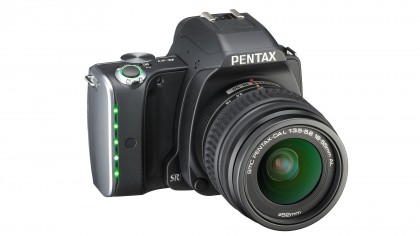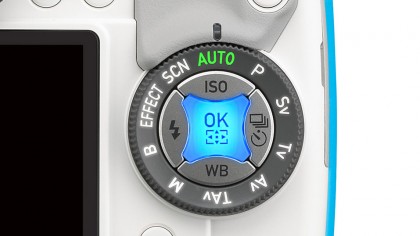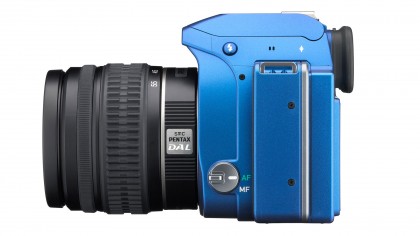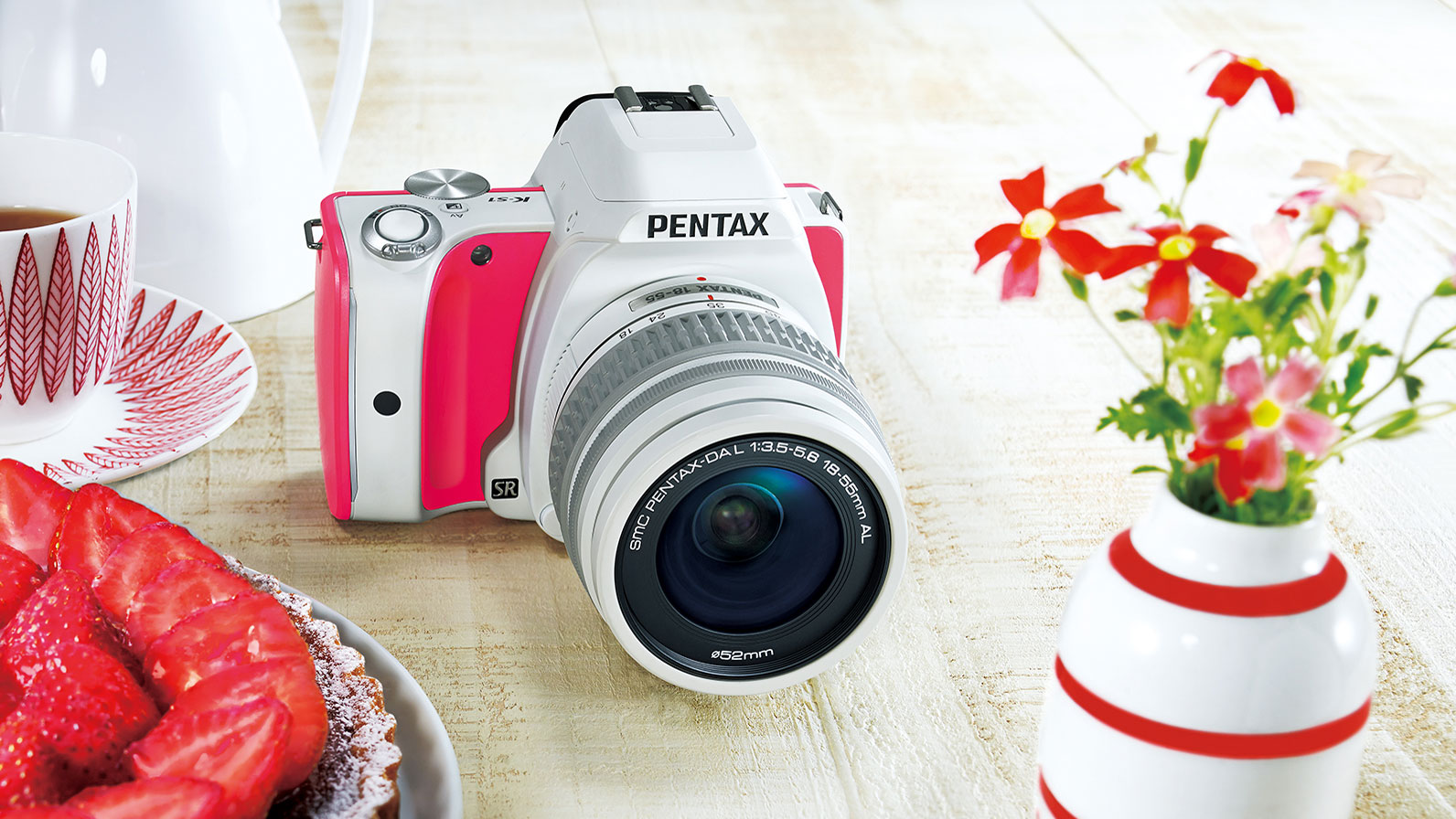Why you can trust TechRadar
The K-S1 has quite a boxy and utilitarian look to it, with squared off edges compared with the rounder, softer edges you might find on a Canon or Nikon DSLR. There's a pretty hefty grip on the right hand side of the camera, but your fingers don't sit all that comfortably on it – there's also no recess where your forefinger might sit a bit more flush with the camera.
There's a strip of lights built into the grip of the camera, which glows when the camera is first switched on. If you're using the self-timer mode, the strip will flash in different sections to indicate when the shutter is about to be released.

On the top of the camera is an on/off switch with the shutter release sitting in the middle. A light encircles the shutter release button and pulsates slowly when the camera is on but not currently being used, or is on constantly when the camera is active. If you switch to video record mode, the light will turn red.
Also on top of the camera, there's an exposure compensation button and a green button which is used to reset certain parameters to their defaults quickly and easily. For instance, if you adjust the exposure compensation, tapping the green button will return you to 0EV.
A fairly large dial on the top of the camera can be used to alter the aperture or shutter speed, depending on the shooting mode that you're in. This dial is easily reached with your thumb and is stiff enough to not accidentally slip out of place, but not too stiff to be difficult to turn. You also use this dial to adjust exposure compensation after you've pressed the exposure compensation button.
In order to change the shooting mode, you move a bigger dial on the back of the camera which surrounds the four way navigational pad and is marked with modes such as "Av" (aperture priority) and Effect. There are more lights to be found here – the selected mode shows a green light behind the lettering.
Directional buttons
Each of the directional keys gives you an access to a dedicated function, such as ISO (up) and white balance (down). In the middle of the navigational pad is a large OK button, which, you guessed it, lights up. Hold this down to switch between using the directional keys to set the autofocus point and using the directional keys for their dedicated functions. This makes it a bit of a slow process when you want to quickly change a setting, but it's something you soon get used to. As the four directional buttons and the OK button sit fairly flush to the camera, it they're not easy to navigate by touch alone, such as when you're holding the camera up to your eye.

To quickly change other settings, you can hit an info button just underneath the mode dial. Here you'll find common settings such as AF mode, metering and image quality. Simply scroll around to the setting you want to change, then use the large dial on the top of the camera to alter the setting.
Just behind the lens mount is a switch for moving between manual focus and automatic focus. It's a fairly loose dial so it is reasonably easy to accidentally knock it out of place while in a bag or something. This can leave you wondering why it's no longer focusing any more.

Live view is activated by a button on the left hand side of the camera, just next to the viewfinder. When you're in live view you can use the green button on the top of the camera to return the focus point to the centre of the screen.
Sadly, the kit lens is a real let-down. Both Canon and Nikon have super-smooth, near-silent AF motors built into the lens, but this one is driven by a focusing screw in the lens mount. It's quick enough, but it's coarse, noisy and in some situations it will hunt and hesitate.
Amy has been writing about cameras, photography and associated tech since 2009. Amy was once part of the photography testing team for Future Publishing working across TechRadar, Digital Camera, PhotoPlus, N Photo and Photography Week. For her photography, she has won awards and has been exhibited. She often partakes in unusual projects - including one intense year where she used a different camera every single day. Amy is currently the Features Editor at Amateur Photographer magazine, and in her increasingly little spare time works across a number of high-profile publications including Wired, Stuff, Digital Camera World, Expert Reviews, and just a little off-tangent, PetsRadar.

